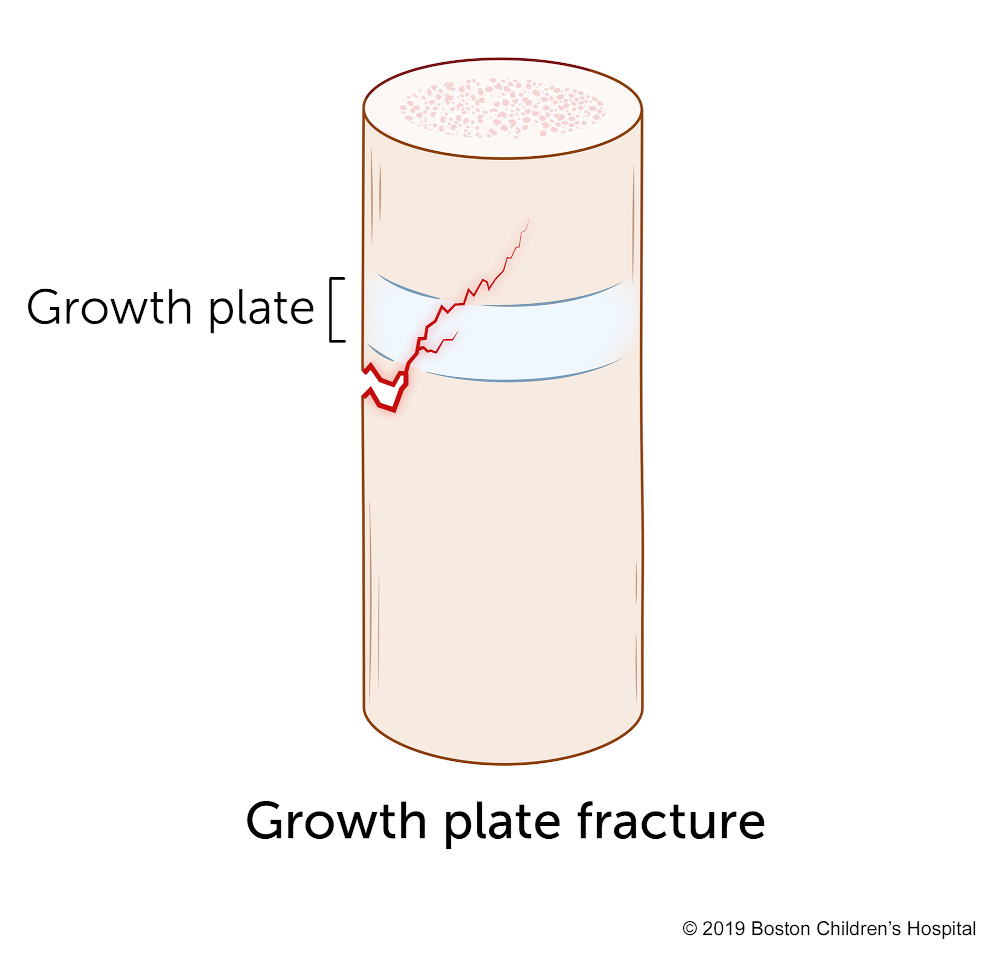Growth Plate Fractures | Symptoms & Causes
What are the symptoms of a growth plate fracture?
The symptoms of a growth plate fracture vary depending on the degree of seriousness. Sometimes, a child may feel mild pain, and other times the injury may be more visible and urgent.
Symptoms of a growth plate fracture may include:
- pain or swelling in the injured limb
- obvious deformity in the injured area
- difficulty using or moving the injured area in a normal manner
- warmth, bruising, or redness in the injured area
Seek medical care right away if your child displays any of symptoms of a fracture. If you can see the bone poking out through the skin, do not move your child and call 911 immediately.
What causes growth plate fractures?
Growth plate fractures happen the way any fracture can happen, most commonly through sports or playground accidents.
Growth Plate Fractures | Diagnosis & Treatments
How are growth plate fractures diagnosed?
- A doctor will check to see if the affected area is swollen, warm, or has a visible deformity, like crookedness or broken skin.
- The doctor will x-ray the area to determine the degree of the fracture, whether the bone has been displaced or moved, and what other testing, imaging, or treatment might be necessary.
- The doctor may ask your child to wiggle their fingers or toes.
- The doctor may also put pressure on different areas around the injury to gauge soreness.
How are growth plate fractures treated?
Your child’s immediate and long-term treatment depends on the how severe the fracture is. If your child’s bone has been displaced or moved, it may require more extensive treatment than if it is non-displaced.
Non-surgical options
Splint, cast, or walking boot
If your child has a minor, non-displaced fracture, the doctor may treat it like a sprain and suggest a splint, cast, or walking boot to protect the area for four to six weeks. Usually, these types of fractures do not require long-term care.
Setting the bone back in place
When a child’s bone has moved or been displaced, an orthopedist can set the bone back in place in the emergency room without having to operate. Your child will be sedated, and the doctor will use x-rays to determine where to properly place the bone. Once the bone has been set, a cast will keep it in place while it heals. Usually, you will be able to go home that night. In some cases, children are admitted to the hospital to make sure there is not too much swelling. Follow-up care may include physical therapy and doctor’s visits for the first six months.
Surgical options
If your child has an unstable growth plate fracture that is not held securely in place with a cast, it may require surgery. To increase the chances of the bone setting properly, your child’s doctor will decide very early in treatment whether to operate. If the fracture does involve a joint, then an incision can be made to realign the joint and hold it in place with screws, a plate, or a pin. Patients who go through surgery receive a cast and long-term follow up instructions, which may include physical therapy.
What is the long-term outlook for a child with a growth plate fracture?
A growth plate injury may affect the angle of bone growth and overall height of a child. When a body part with two parallel bones, like the wrist, experiences growth arrest, each bone needs to be examined separately. If one bone stops growing, there is risk that the parallel bone might continue to grow and surpass it, making the wrist grow at an angle.
If one leg were to stop growing because of a growth arrest, the legs could end up being different lengths. Since height is determined by multiple growth plates in the hips, knees, and ankles, a growth plate injury in just one of these areas may not impact your child’s height significantly. Orthopedic surgeons can usually prevent angled bone growth or unequal bone growth with early treatment.
An orthopedic specialist can usually determine whether a child’s bones have stopped growing within the first three to six months after a growth plate injury. If the bone has stopped growing, your child’s doctor may recommend stunting the bone that matches it so the two limbs will be the same length.
If the bone has continued to heal and grow after treatment, then your child may not require more follow-up care.
- Older children have already done most of their growing, so the consequences can be less substantial.
- Younger children’s bones have more growing to do, so if a bone stops growing, the consequences could be more serious.
How we care for growth plate fractures
Every year the Orthopedic Center at Boston Children’s Hospital treats thousands of children, adolescents, and young adults with fractures of all complexities. We see a large volume of pediatric growth plate fractures in children every year and have the experience and knowledge to treat them well.
At our Orthopedic Urgent Care Clinics, we care for injuries that require prompt medical attention but are not serious enough to need emergency room care. We offer urgent care services in four locations: Boston, Waltham, Peabody, and Weymouth.


